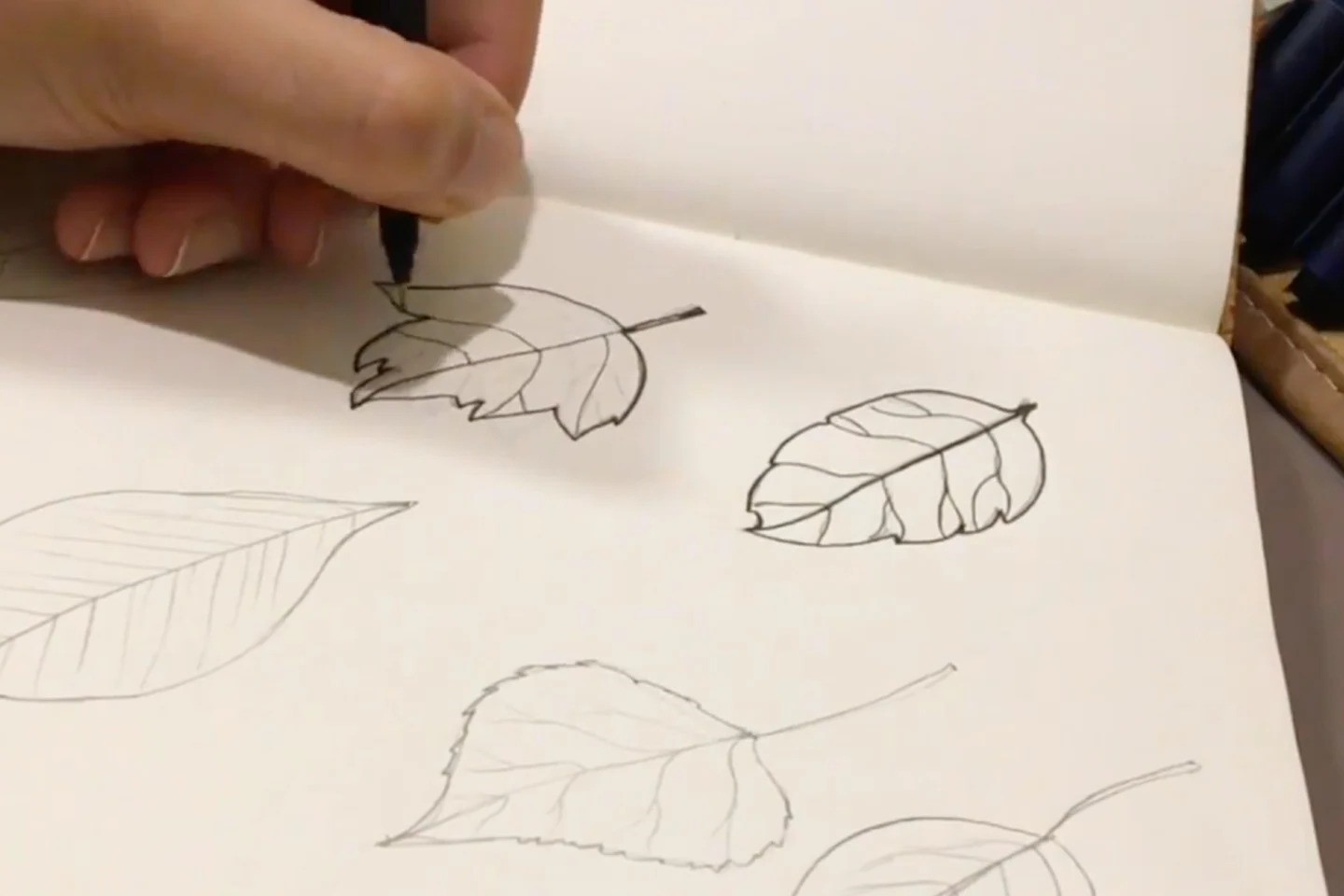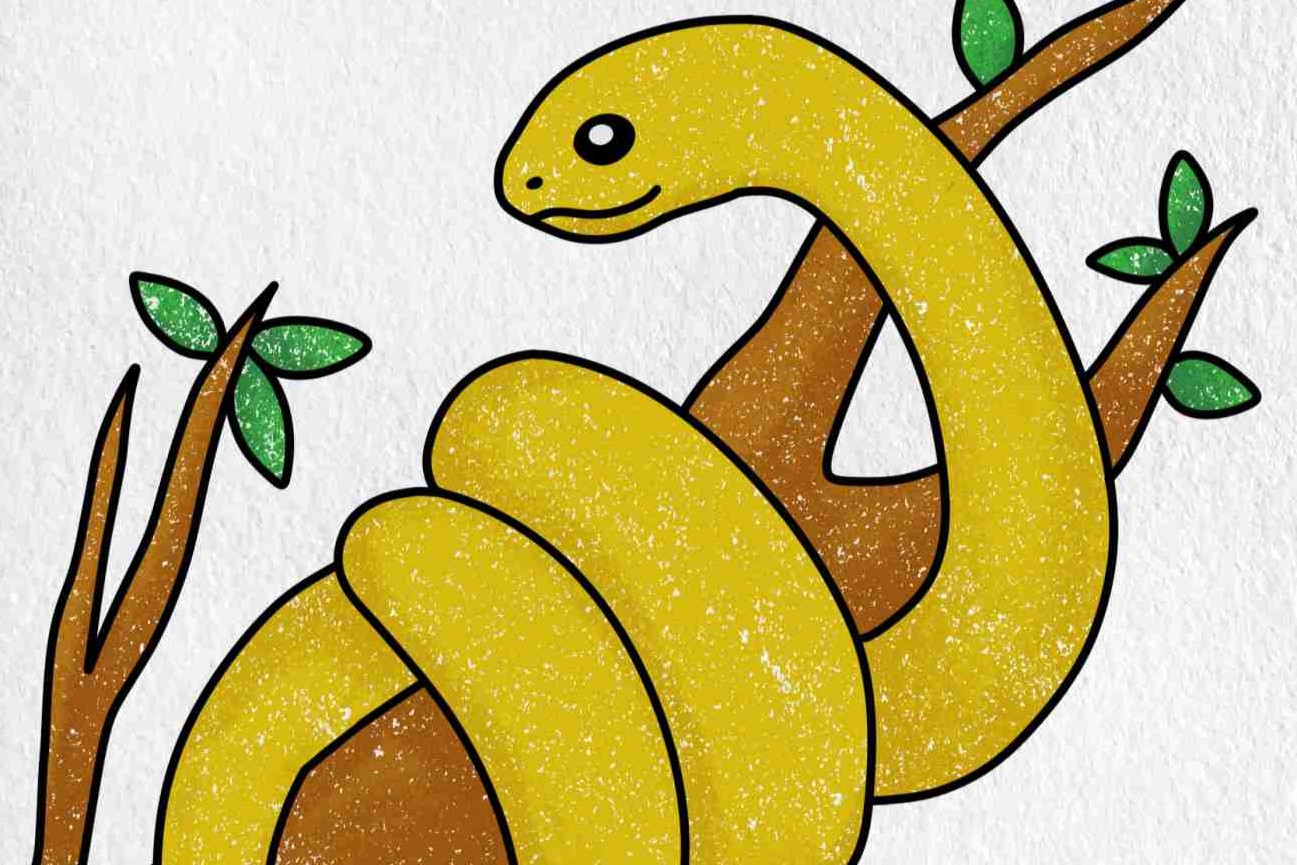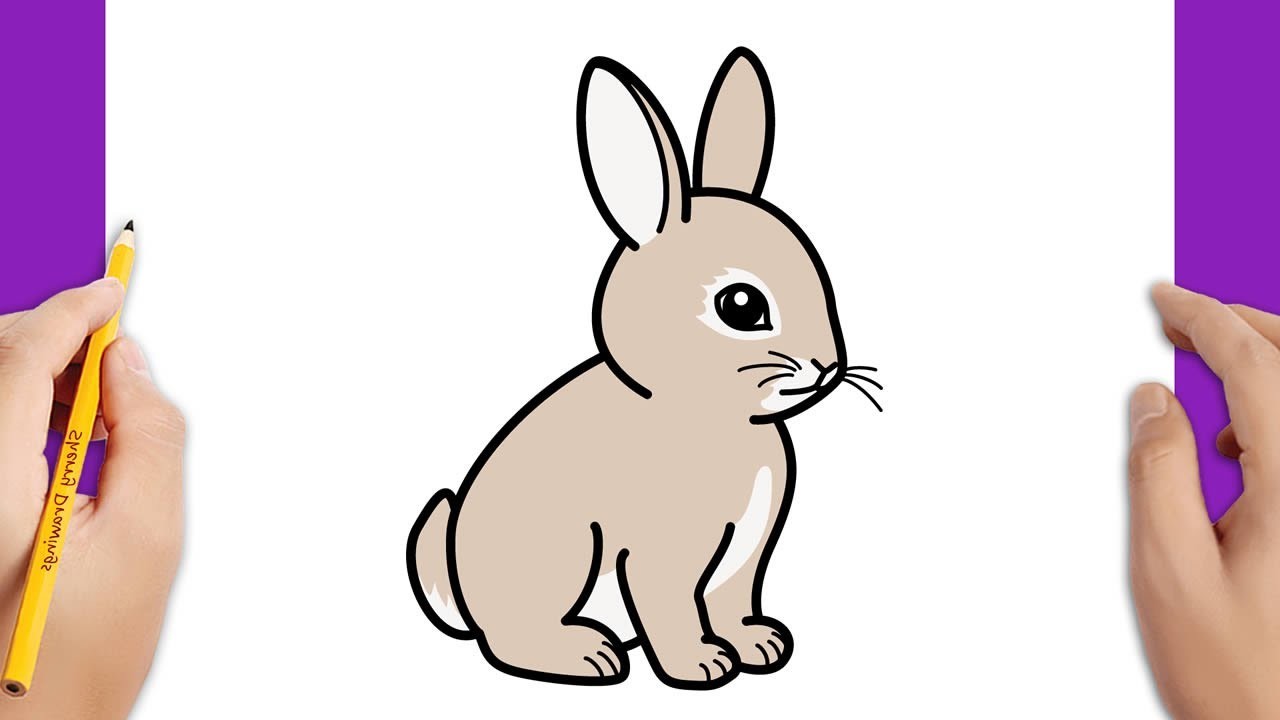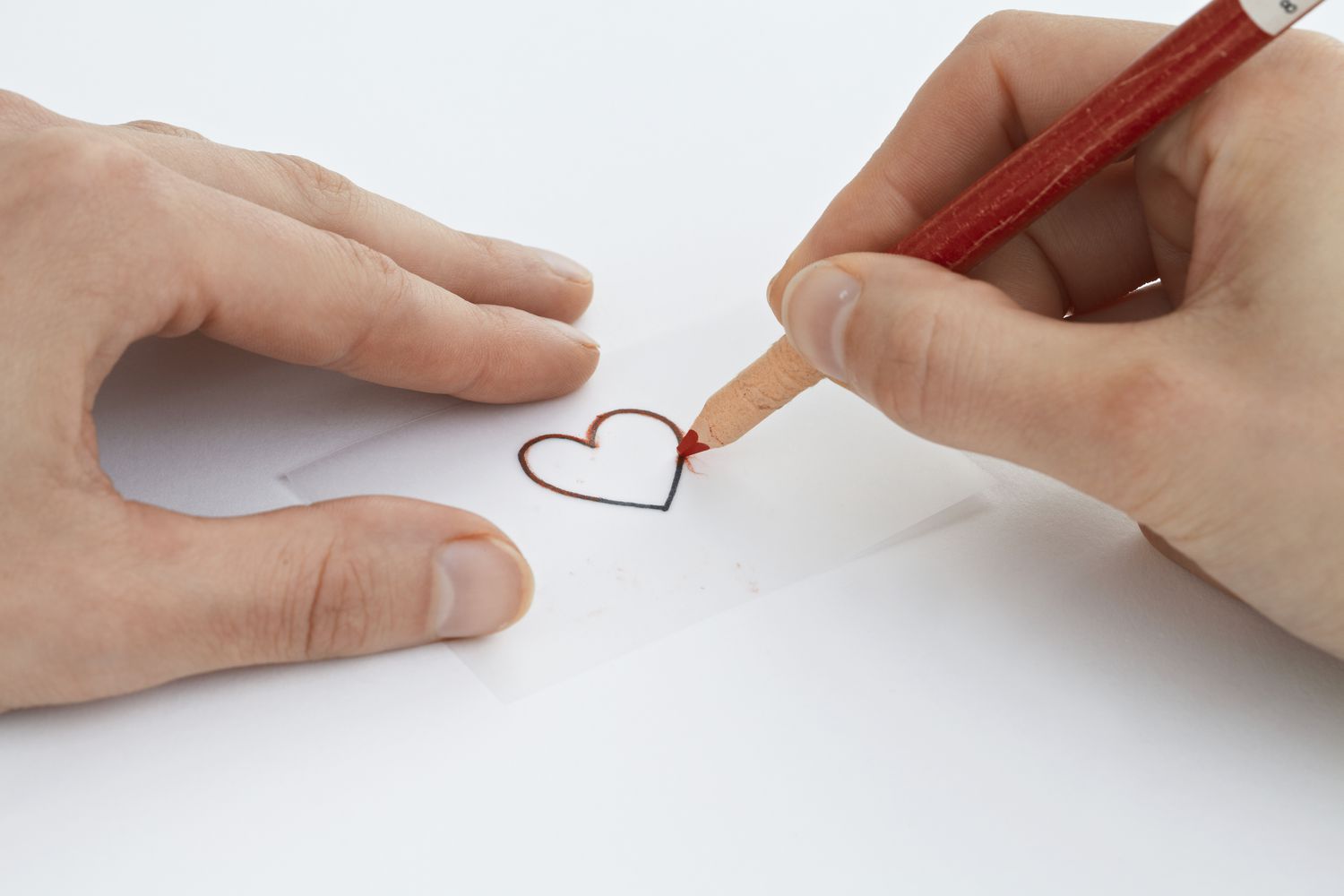Home>Arts and Culture>How To Draw A Leaf


Arts and Culture
How To Draw A Leaf
Published: February 26, 2024
Learn how to draw a realistic leaf with step-by-step instructions. Explore the art of drawing nature and enhance your artistic skills in arts and culture.
(Many of the links in this article redirect to a specific reviewed product. Your purchase of these products through affiliate links helps to generate commission for Noodls.com, at no extra cost. Learn more)
Table of Contents
Introduction
Drawing a leaf may seem like a simple task, but capturing its intricate details and organic form can be a rewarding artistic endeavor. Whether you are a seasoned artist or a beginner looking to explore the world of botanical illustration, learning how to draw a leaf can provide a foundation for understanding the fundamentals of shape, texture, and shading.
Leaves come in a myriad of shapes, sizes, and textures, making them a fascinating subject for artists across various mediums. From the delicate curves of a maple leaf to the serrated edges of an oak leaf, each specimen offers a unique opportunity to observe nature's beauty and translate it onto paper or canvas.
By mastering the art of drawing leaves, you can develop essential skills that are transferable to a wide range of artistic pursuits. Understanding the structure of a leaf, the way light interacts with its surface, and the subtle variations in color and texture can elevate your drawing abilities and enhance your overall artistic repertoire.
In this comprehensive guide, we will explore the step-by-step process of drawing a leaf, from sketching the basic shape to adding intricate details and refining the final composition. With the right materials and a keen eye for observation, you can embark on a creative journey that celebrates the elegance and complexity of nature's foliage.
So, gather your drawing supplies and prepare to immerse yourself in the art of capturing the essence of a leaf on paper. Whether you prefer the precision of a pencil, the vibrant hues of colored pencils, or the fluidity of watercolors, this guide will equip you with the knowledge and techniques to bring a leaf to life through the power of art.
Read more: How To Draw Four Leaf Clover
Materials Needed
To embark on the journey of drawing a leaf, you will need a few essential materials to bring your artistic vision to fruition. Whether you prefer the classic elegance of graphite pencils or the vibrant versatility of colored pencils, selecting the right tools can significantly impact the outcome of your leaf drawing. Here's a comprehensive list of materials to ensure you are well-equipped for this artistic endeavor:
-
Drawing Paper: Begin with a high-quality drawing paper that offers a smooth surface for sketching and shading. Opt for a paper weight that suits your preferred drawing medium, whether it's pencil, colored pencil, or ink.
-
Pencils: A set of graphite pencils in varying degrees of hardness (ranging from 2H to 6B) will allow you to achieve a diverse range of tones and textures in your leaf drawing. Additionally, mechanical pencils can provide precision for intricate details.
-
Eraser: A soft, kneaded eraser is essential for gently lifting graphite or colored pencil marks, allowing you to make adjustments and refine the details of your leaf illustration.
-
Blending Tools: Consider using blending stumps or tortillons to seamlessly blend and soften pencil strokes, creating a smooth and realistic texture on your leaf drawing.
-
Colored Pencils (Optional): If you wish to add vibrant hues and intricate details to your leaf, a set of colored pencils in various shades of green, yellow, and brown can enhance the visual impact of your artwork.
-
Fine Liner or Ink Pen (Optional): For artists who prefer working with ink, a fine liner or ink pen can be used to outline the leaf's structure and add precise details to the illustration.
-
Reference Material: While not a physical tool, having a reference image or an actual leaf for observation can provide valuable insights into the intricate patterns, textures, and shapes found in nature's foliage.
By gathering these materials, you will be well-prepared to embark on the artistic journey of drawing a leaf with precision, creativity, and attention to detail. Whether you choose to work in monochrome or infuse your drawing with vibrant colors, these materials will serve as the foundation for bringing the beauty of a leaf to life on paper.
Step 1: Sketch the Basic Shape
The first step in drawing a leaf is to capture its fundamental shape and outline. Begin by selecting a reference image or observing a real leaf to understand its unique form. With a pencil in hand and a blank sheet of drawing paper before you, take a moment to study the overall silhouette of the leaf. Notice the curvature of its edges, the symmetry or asymmetry of its lobes, and the tapering of its tip.
Using a light hand, sketch the basic shape of the leaf, focusing on capturing its outline with simple, flowing lines. Pay attention to the proportions and angles, ensuring that the overall shape reflects the distinct characteristics of the leaf you are drawing. Whether it's the heart-shaped contours of a linden leaf or the elongated form of a willow leaf, strive to convey the essence of the leaf's silhouette with accuracy and grace.
As you sketch, consider the positioning of the stem or petiole, which connects the leaf to the branch or stem of the plant. Depending on the leaf's structure, the petiole may be centrally located or positioned to one side. Incorporating this detail in your initial sketch can provide a strong foundation for the leaf's overall composition.
Remember, the goal of this step is to establish the basic framework of the leaf, laying the groundwork for the intricate details and textures that will be added in subsequent stages. Embrace the organic nature of the leaf's form, allowing your lines to flow with fluidity and grace as you bring the initial sketch to life.
By focusing on capturing the basic shape of the leaf with precision and attention to detail, you will set the stage for the next steps of adding veins, refining edges, and infusing the leaf with intricate details. With the foundation of the leaf's silhouette in place, you are ready to embark on the journey of transforming a simple sketch into a captivating representation of nature's delicate foliage.
Step 2: Add Veins
Once the basic shape of the leaf has been sketched, the next crucial step is to add the intricate network of veins that courses through its surface. Veins not only contribute to the structural integrity of the leaf but also serve as captivating visual elements that define its character. By carefully observing the arrangement of veins in the reference image or the actual leaf, you can infuse your drawing with a sense of realism and botanical accuracy.
Begin by examining the primary veins that form the central framework of the leaf. These veins often radiate from the base of the leaf, extending towards the tip and branching out into secondary veins. Using a lighter pencil or adjusting the pressure on your drawing tool, delicately sketch the primary veins, paying attention to their curvature and the points at which they diverge into secondary veins.
As you progress, observe the intricate patterns of secondary and tertiary veins that intersect and crisscross the leaf's surface. These finer veins contribute to the leaf's texture and play a significant role in conveying its organic complexity. With a keen eye and a steady hand, carefully replicate the meandering paths of these veins, ensuring that they follow the natural contours of the leaf and contribute to its overall visual appeal.
Consider the varying thickness and depth of the veins, as well as any subtle asymmetries or irregularities that add character to the leaf. By incorporating these details, you can elevate the authenticity of your drawing and evoke a sense of natural beauty that captures the essence of the leaf.
Throughout this process, maintain a balance between precision and artistic interpretation, allowing the veins to flow organically while adhering to the underlying structure of the leaf. Embrace the opportunity to infuse your drawing with a sense of botanical wonder, celebrating the intricate design of nature's foliage through the delicate portrayal of its veins.
As you add veins to your leaf drawing, take the time to observe the interplay of light and shadow along the veins, considering how they contribute to the overall three-dimensional quality of the leaf. By skillfully rendering the veins with attention to detail and sensitivity to their natural patterns, you can breathe life into your artwork and create a captivating representation of a leaf that resonates with botanical authenticity.
Step 3: Refine the Edges
With the foundational elements of the leaf in place, the next pivotal step in the drawing process involves refining the edges to convey the nuanced intricacies of its natural contours. The edges of a leaf play a crucial role in defining its character, from the gentle undulations of its perimeter to the subtle irregularities that contribute to its organic charm.
Begin by carefully examining the edges of the leaf, paying close attention to any serrations, lobes, or irregularities that distinguish its silhouette. Using a sharpened pencil or a fine liner, delicately trace along the outer perimeter of the leaf, capturing the ebb and flow of its edges with precision and finesse. Whether the leaf exhibits smooth, rounded edges or jagged, serrated contours, strive to replicate these details with a keen eye for accuracy.
As you refine the edges, consider the interplay of light and shadow that defines the leaf's form. Emphasize the subtle gradations in tone along the edges, allowing the play of light to accentuate the organic curves and undulations. By skillfully manipulating the pressure and stroke of your drawing tool, you can create a sense of depth and dimension, infusing the edges with a lifelike quality that draws the viewer into the intricate beauty of the leaf.
Furthermore, take note of any imperfections or asymmetries along the edges, as these natural variations contribute to the authenticity of the leaf's portrayal. Embrace the organic irregularities, allowing them to lend a sense of character and uniqueness to your drawing. By capturing these subtle nuances, you can evoke a profound appreciation for the inherent diversity and charm found in nature's foliage.
Throughout this process, maintain a delicate balance between precision and artistic interpretation, allowing the refinement of the edges to harmonize with the overall composition of the leaf. Each stroke should reflect a thoughtful observation of the leaf's unique characteristics, culminating in a portrayal that celebrates the organic elegance and intricate details of nature's botanical wonders.
As you refine the edges of the leaf, consider the interplay of light and shadow along its contours, leveraging shading techniques to enhance the three-dimensional quality of the leaf. By infusing the edges with a sense of depth and dimension, you can elevate the visual impact of your drawing, creating a captivating representation that resonates with botanical authenticity.
Read more: How To Propagate A Fiddle Leaf Fig
Step 4: Add Details
As you progress to the pivotal stage of adding details to your leaf drawing, you have the opportunity to infuse your artwork with a rich tapestry of intricate elements that capture the essence of the leaf's unique characteristics. From the delicate texture of its surface to the subtle variations in color and shading, the addition of details elevates your drawing to a new level of botanical authenticity and visual allure.
Begin by closely observing the surface of the leaf, noting the presence of tiny hairs, serrations, or imperfections that contribute to its organic charm. With a keen eye for detail, delicately replicate these subtle features, using a combination of fine lines and shading to convey the nuanced texture of the leaf's surface. Whether it's the velvety softness of a lamb's ear leaf or the rugged texture of an oak leaf, strive to capture these details with precision and sensitivity.
Furthermore, pay attention to the presence of any imperfections or blemishes on the leaf, as these natural elements add character and authenticity to your drawing. Embrace the organic irregularities, allowing them to enrich the visual narrative of your artwork and evoke a sense of genuine botanical wonder.
Incorporate the play of light and shadow to accentuate the three-dimensional quality of the leaf, using subtle shading techniques to create depth and dimension. Consider the way light interacts with the leaf's surface, highlighting certain areas and casting gentle shadows in others. By skillfully manipulating the tonal values, you can imbue your drawing with a sense of realism and vitality, bringing the leaf to life on paper.
Additionally, observe the subtle variations in color that adorn the leaf, from vibrant hues to delicate gradients. Whether you are working with colored pencils or monochromatic tones, carefully layer and blend your chosen colors to achieve a harmonious and lifelike representation of the leaf's natural pigmentation. Pay attention to the interplay of warm and cool tones, as well as the presence of any mottled patterns or speckles that contribute to the leaf's visual allure.
As you add details to your leaf drawing, consider the overall composition and balance of the artwork, ensuring that each element harmonizes with the organic elegance of the leaf. By infusing your drawing with a rich tapestry of details, you can create a captivating representation that celebrates the intricate beauty and botanical authenticity of nature's foliage.
Step 5: Final Touches
With the intricate details and essential elements of the leaf drawing in place, the final touches serve as the culminating stage where the artwork is refined, polished, and brought to its full potential. This pivotal phase allows the artist to step back, evaluate the composition as a whole, and make subtle adjustments that elevate the overall impact of the leaf portrayal.
One of the key aspects of the final touches involves reassessing the tonal values and shading within the drawing. By carefully observing the interplay of light and shadow, the artist can refine the contrast and depth, ensuring that the leaf exhibits a compelling three-dimensional quality. Adjustments to the shading, highlights, and mid-tones can enhance the realism of the leaf, infusing it with a sense of vitality and presence.
Furthermore, the final touches encompass refining the intricate details, such as the texture of the leaf's surface and the subtleties of its veins. By delicately fine-tuning the portrayal of these elements, the artist can achieve a heightened level of botanical accuracy and visual appeal. Emphasizing the organic textures and patterns with precision and sensitivity adds a layer of authenticity to the artwork, inviting the viewer to immerse themselves in the captivating intricacies of nature's foliage.
In addition, the final touches may involve evaluating the overall composition and balance of the drawing. This includes considering the placement of the leaf within the composition, the negative space surrounding it, and the visual flow that guides the viewer's gaze. Making subtle adjustments to the positioning or scale of the leaf can enhance its visual impact and create a harmonious interplay between the subject and its surroundings.
Finally, the artist may choose to add a signature or subtle embellishments that personalize the artwork, marking it as a unique creation. Whether it's a discreet signature in the corner of the drawing or a delicate embellishment that complements the leaf portrayal, these final touches serve as a testament to the artist's creative vision and attention to detail.
As the final touches are meticulously applied, the leaf drawing undergoes a transformation, evolving from a collection of lines and shapes into a captivating representation of nature's botanical beauty. Each nuanced adjustment and refined detail contributes to the overall impact of the artwork, culminating in a portrayal that resonates with authenticity, artistry, and a profound appreciation for the elegance of a leaf.
Conclusion
In conclusion, the process of drawing a leaf is a captivating journey that celebrates the intricate beauty and botanical authenticity of nature's foliage. From the initial sketch of the leaf's basic shape to the final touches that refine its portrayal, each step in the drawing process offers an opportunity to immerse oneself in the artistry of capturing the essence of a leaf on paper.
Drawing a leaf transcends the mere act of replicating its form; it invites the artist to observe, appreciate, and translate the organic elegance of nature's creations into a visual narrative. Through the careful study of the leaf's silhouette, the delicate rendering of its veins, and the nuanced portrayal of its texture and details, the artist gains a profound understanding of the inherent complexity and beauty found in even the simplest of natural elements.
As the final touches are applied, the leaf drawing emerges as a testament to the artist's keen observation, technical skill, and creative vision. The interplay of light and shadow, the intricacies of the leaf's surface, and the overall composition harmonize to create a portrayal that resonates with botanical authenticity and visual allure.
Moreover, drawing a leaf serves as a gateway to honing essential artistic skills, from mastering the use of line and form to understanding the dynamics of light and shadow. The process cultivates a deep appreciation for the delicate nuances and organic irregularities found in nature, fostering a heightened sense of observation and interpretation that extends beyond the realm of botanical illustration.
Ultimately, the art of drawing a leaf transcends the boundaries of representation; it embodies a profound connection to the natural world and a celebration of the timeless beauty found in the intricate patterns and textures of foliage. Whether the leaf is rendered in monochrome elegance or infused with vibrant hues, each drawing becomes a testament to the artist's ability to capture the essence of nature's botanical wonders with precision, creativity, and a deep reverence for the art of observation.
In essence, drawing a leaf is not merely an artistic endeavor; it is a poetic homage to the elegance, complexity, and enduring allure of nature's delicate foliage, inviting both the artist and the viewer to pause, observe, and marvel at the timeless beauty found in the simple yet profound form of a leaf.














